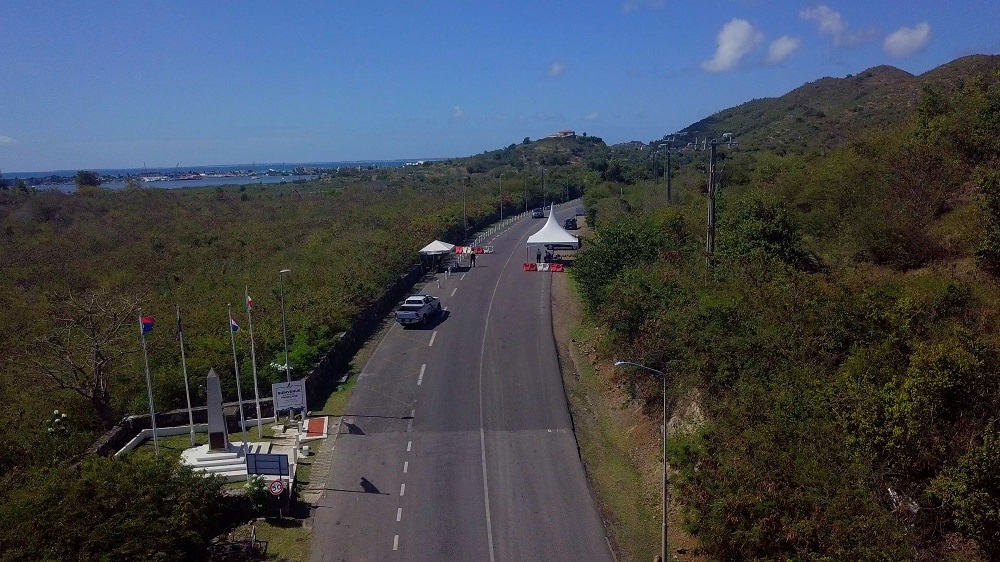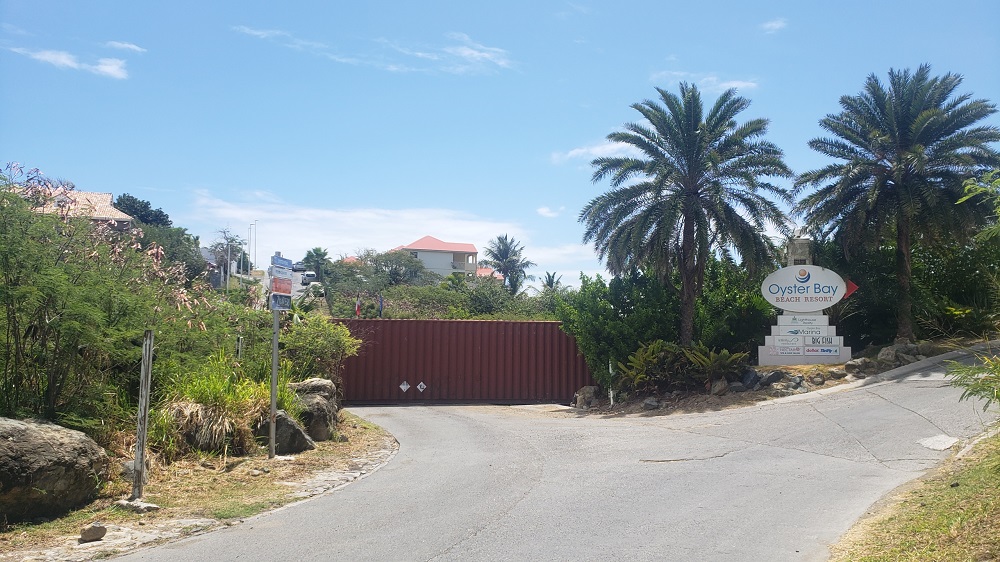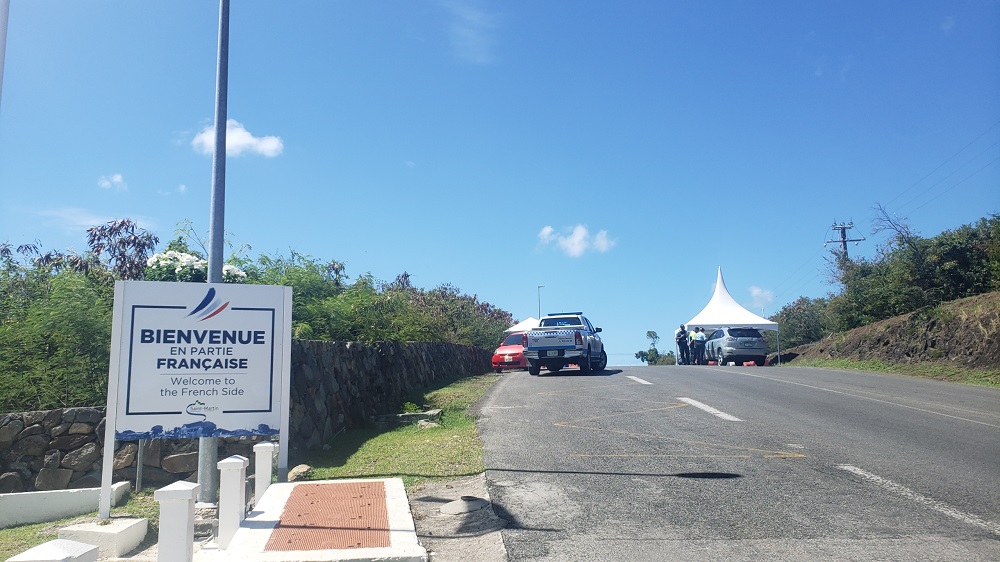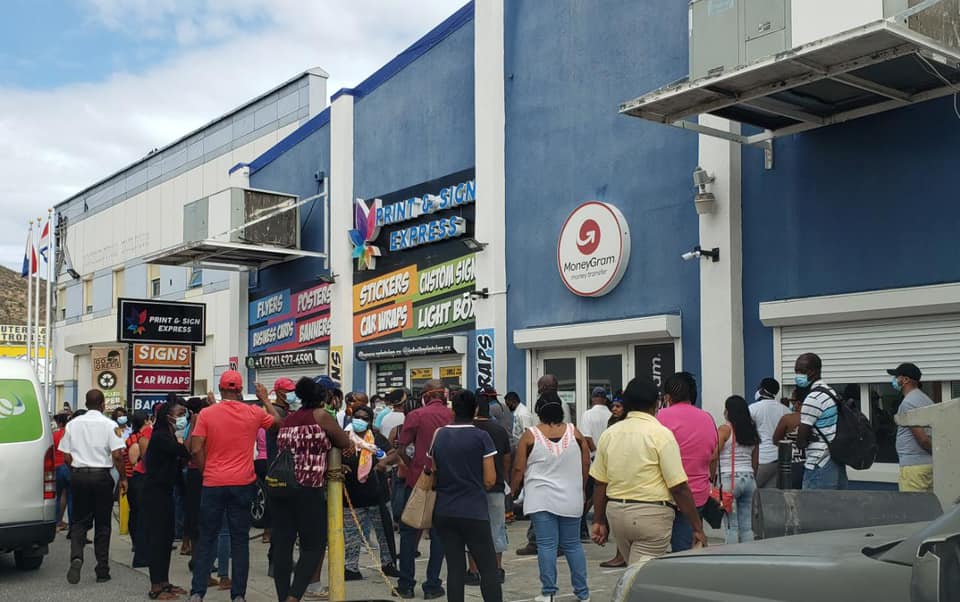Why does the French continue monitoring the borders?

~ Why is the French side border controls still in place? What are they looking for? How long will it last? ~
From our French side Correspondent
GREAT BAY — It has been exactly two weeks since the government on the Dutch side in the South in Great Bay decided to cease all border controls into Sint Maarten at all the frontiers. On Saturday, May 16, 2020, Prime Minister Silveria Jacobs announced that “it was decided that based on the efforts of the government to properly contain the virus, leading to a decrease in the number of COVID-19 cases on the both sides, as well as the bonds that exist between the people, it is no longer necessary to maintain the border controls and restrictions of movement between the two sides.”
Despite the decision taken by their Dutch counterparts, French authorities decided to continue their border control activities, citing the appearance of a new COVID-19 positive case on French Saint Martin that very same Saturday, May 16, as the reason for maintaining the checkpoints at the frontiers. Entry onto the French side of the island is only possible on presentation of a certificate, a French release stated. “Checks carried out by the Gendarmerie and border police will be maintained in Bellevue and in the French Quarter district. Access via Terres Basses and Baie aux Huîtres remains blocked,” referring to Lowlands and Oyster Bay.

When the police on the Dutch part removed a 40ft container on their side of the border in Oyster Pond, Gendarmes quickly had another container placed on their side to block off the road. The irony is that it is well known that residents living on either side of the island have been crossing over the borders via the many pathways through the bushes and over the hills. Only residents thoughtless enough to leave their cars parked in the vicinity of the border crossing points were caught by police authorities and fined for breaching the borders without authorization.
However, we suspect that maintenance of the border controls by the French authorities was not only a matter of health and safety concerns. The active cases on both sides of the island have since dropped dramatically after a state of emergency was declared. French Saint Martin ordered a full lockdown on March 16, and Dutch Sint Maarten did the same on April 4. Enforcing proper precautions such as the wearing of face masks, social distancing, and even going into the districts and communities on the island to conduct mass testing have proven effective in isolating and containing the spread of the coronavirus.

Yet the French continued their border controls. The controls were even more strictly adhered to when the Préfète Déléguée Sylvie Feucher would do spot checks at the borders to personally ensure inspections were being carried out by the frontier agents and the Gendarmes. This even led to an incident at the Bellevue frontier when one prominent French citizen, a retired doctor by profession still advising the Dutch side medical center on COVID-19 related matters, and therefore authorized by the Dutch side Prime Minister with an official government-approved waiver to cross the border, was unceremoniously stopped by an officer of the French Police aux Frontières (PAF) and disrespectfully addressed in the presence of the Préfète Déléguée as to the reasons for his crossing the border.
Why would the French side authorities go to such lengths to continue border controls that seem unnecessary in the eyes of many residents living, working and conducting business on both the northern and southern side of the island? Why would they incur the wrath of many of their citizens, prominent and otherwise? Families, who have been long separated through the imposition of the lockdown and the isolation measures, were longing to be reunited again. Residents working on either side of the island are also eager to get back to their respective jobs or to be able to collect salary payments or monies owed to them. Some residents were also keen to conduct their banking affairs and money remittance transactions.

However, the French authorities continued maintaining their strict border controls unrelentingly. Residents, who could freely cross the borders over to the Dutch side, were advised that once they crossed over, they would not be able to enter back into the French side, or the “Northern Side” as it is colloquially known to true St. Martiners, writers, poets and grassroots activists who consider themselves indigenous St. Martiners or St. Martinois people, unless they were in possession of a certificate justifying entry into the territory of French St. Martin issued by the Préfecture (for professional, health or family reasons) and Form C issued before May 16 by the government of Dutch St. Maarten.
So we decided to do some research on the French side – the Northern side – of the island as to the reasons why the French authorities were so adamant in being steadfast with their controls, even to the point of asking people at border crossings to show proof of their residency on French Saint Martin in the form of utility bills or bank statements with their French address on them. We will publish this exposé report on Tuesday, June 2nd, 2020.

This exposé gave us a good indication that the enhanced controls and interrogation methods were more than health or safety concerns related. The line of questioning, confirmed by many residents crossing the borders, indicated that these controls and checks were also of an immigration control nature. Sources in the capital of Marigot confirmed to us that these border controls with enhanced checks and engaging lines of questioning were indeed related to immigration controls French authorities were conducting.
For example, it is suspected by insiders close to authorities in the relevant departments that the immigration authorities were on the lookout for French residents who may be working on the Dutch side while living and collecting social security on the French side. Up until the publication of this opinion piece, no one in a position of authority has come forward to confirm or deny this suspicion that has been rumored to be circulating for quite some time now among those that might be directly engaged in this practice and who could be adversely affected by the limited movements to and from the French side.
However, according to reports, Overseas Minister Annick Girardin had said Thursday, May 14, 2020, that she was “not in favor” of the total reopening of the border, stressing in passing that the confinement and closing of the border had made it possible to discover “that many children of Sint-Maarten residents were enrolled in our schools.” This should give us another indication of why the border controls were maintained in May.
Nevertheless, we sincerely hope there may be a light at the end of this dark tunnel as it is rumored that the movement restrictions may be lifted on the night of Monday, June 1st, to Tuesday, June 2nd. Then it is expected that there will be a cessation of all border controls at all the frontiers by the French Police aux Frontières (PAF agents) and Gendarmes. Residents of the North and South can then utter a sigh of relief as they can finally once again engage in the centuries-long practice authorized by the Treaty of Concordia signed on March 23, 1648, to allow the free movement of persons and goods across the borders of both sides of the island of Sint Maarten/Saint Martin known to all as St. Maarten/St. Martin. We will wait and see.
###
Related articles:
French side border controls remain in place
Exposé report: Reasons for the continued French side border controls






















